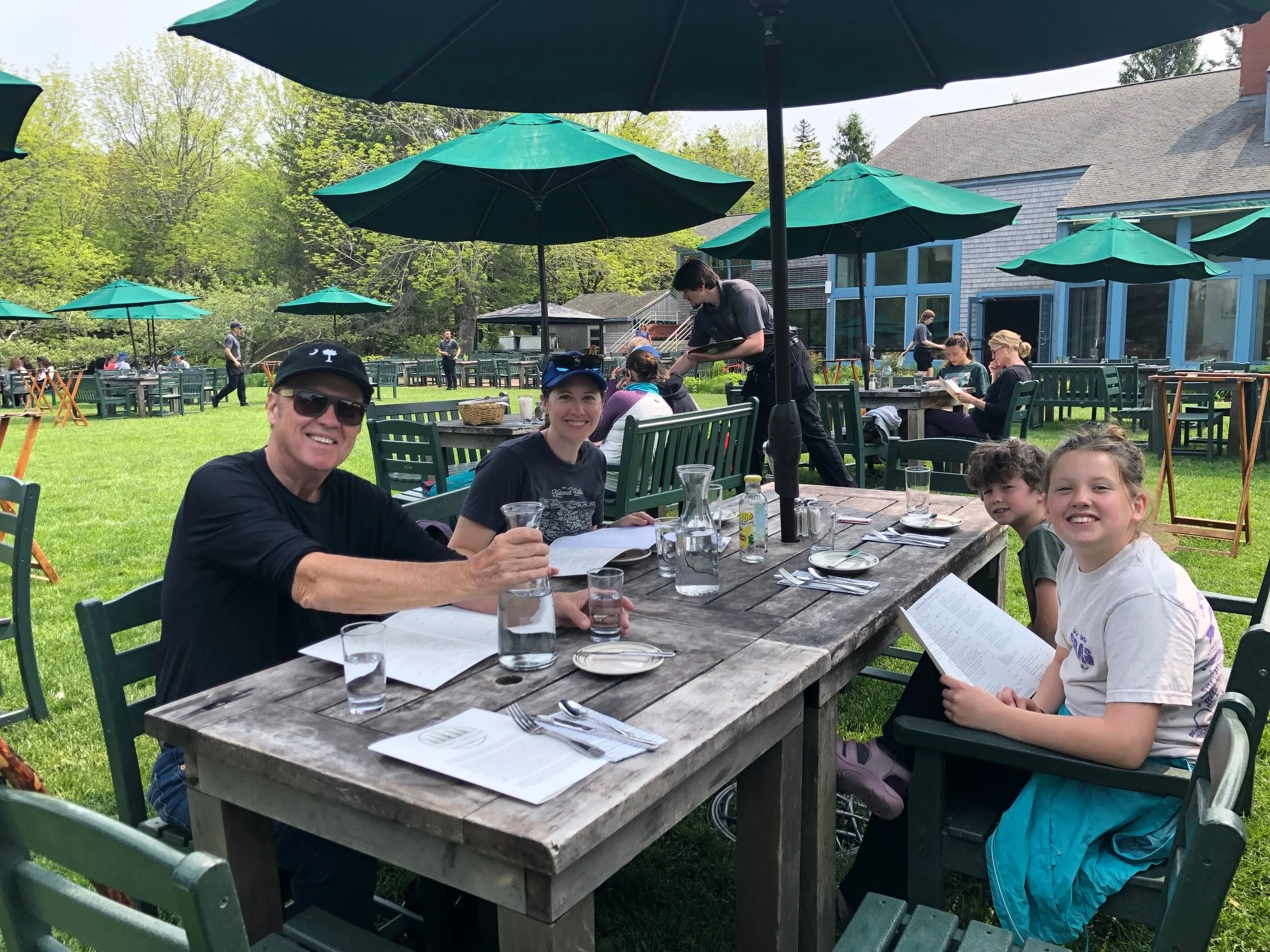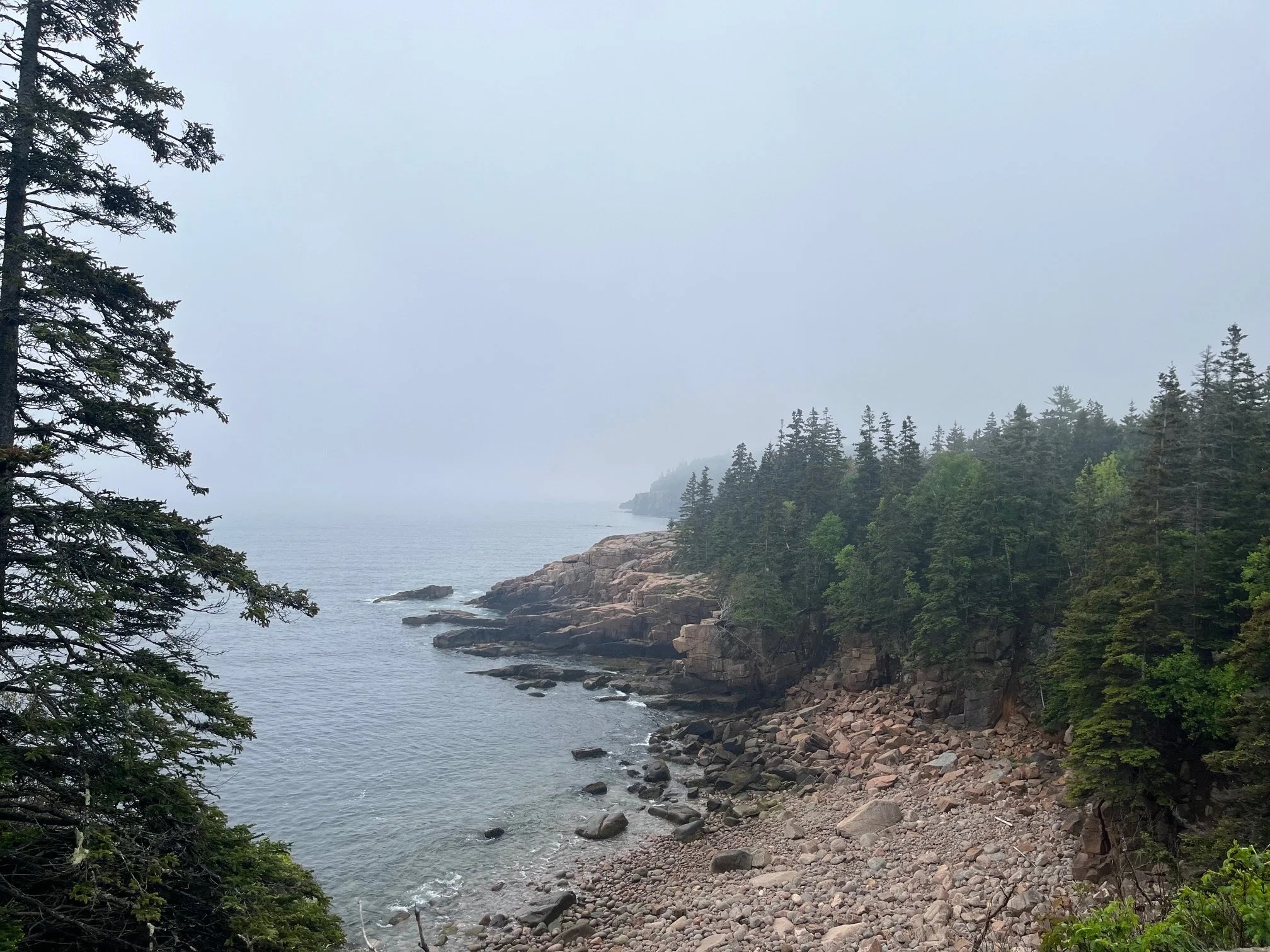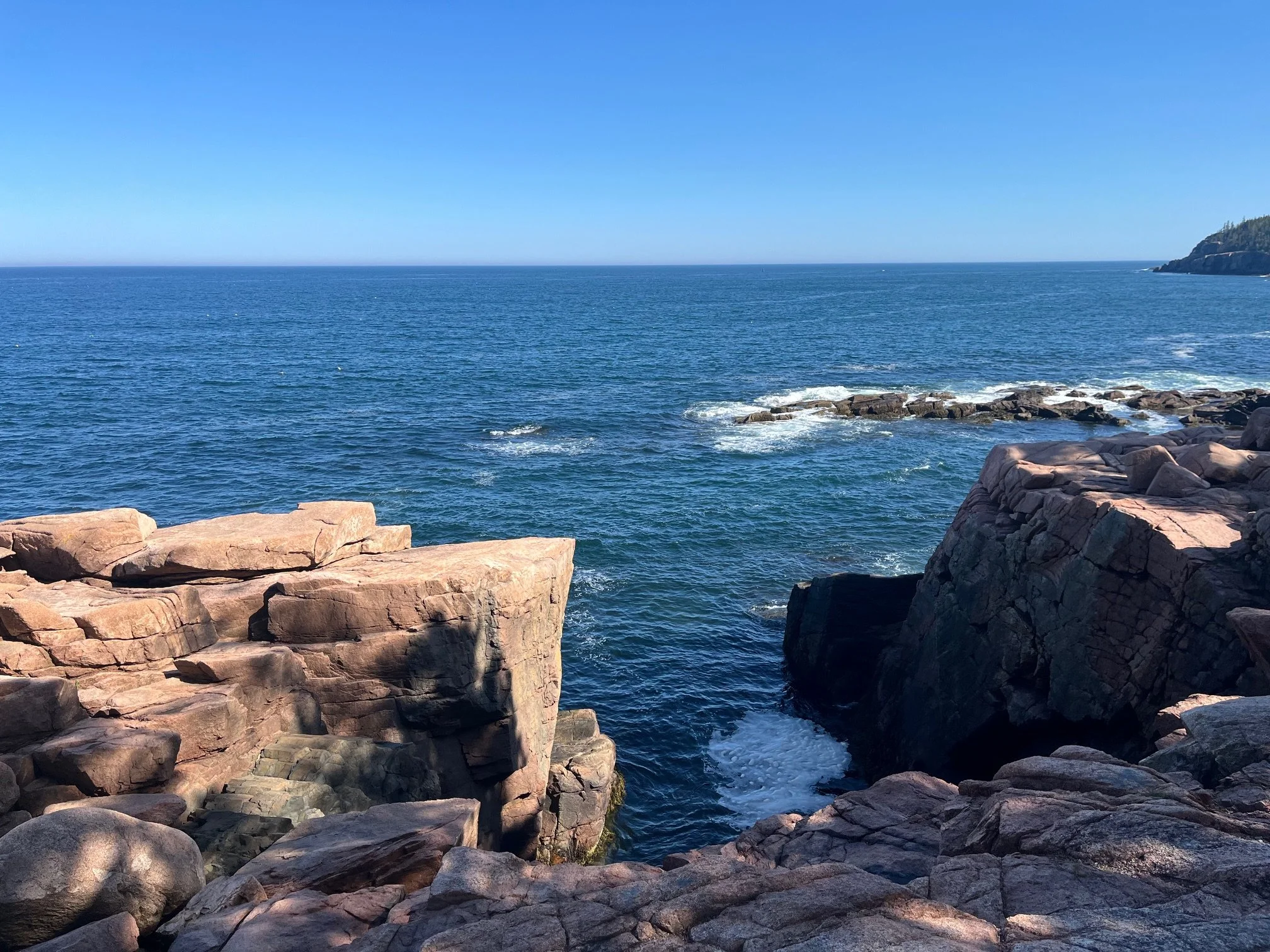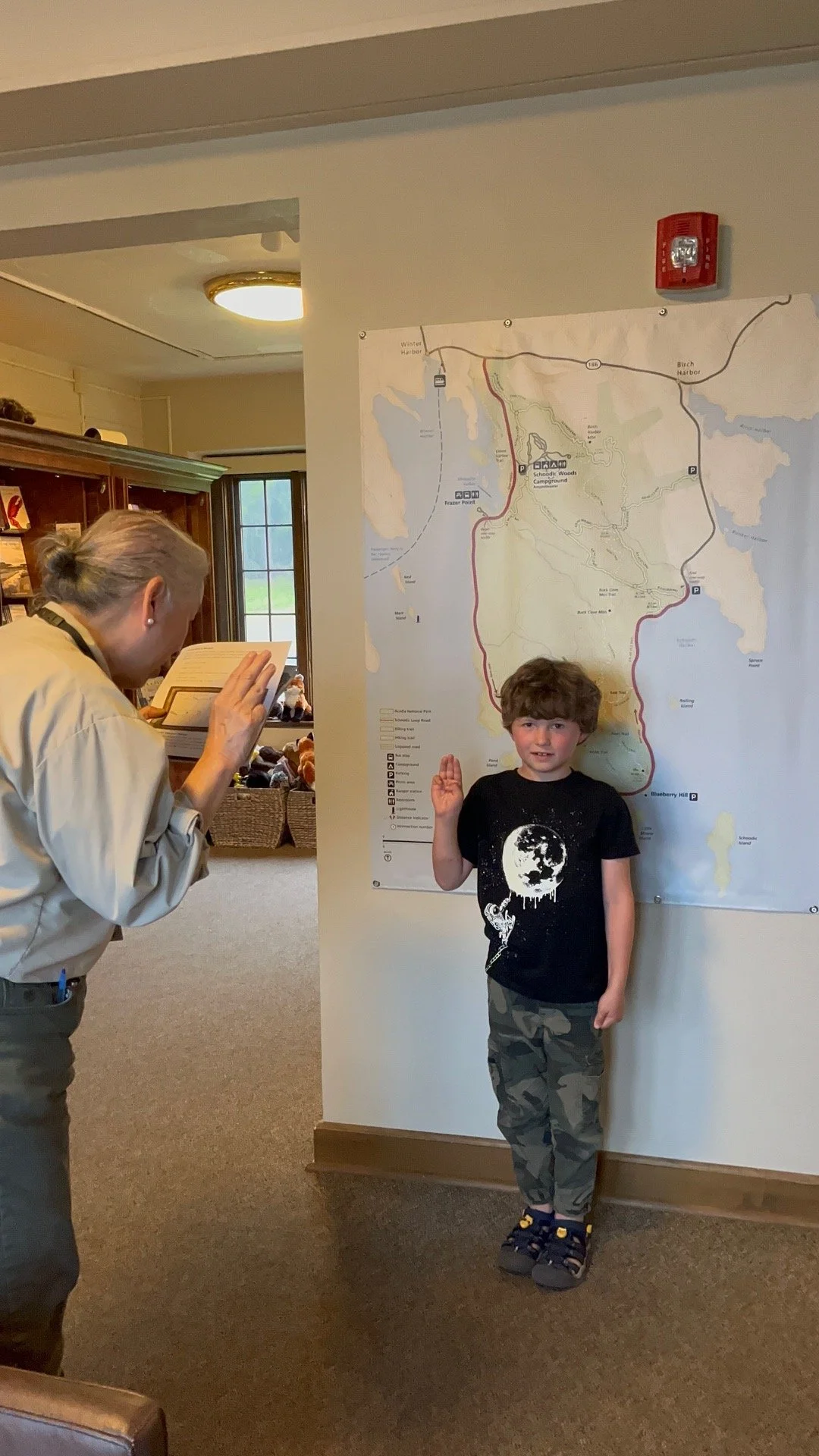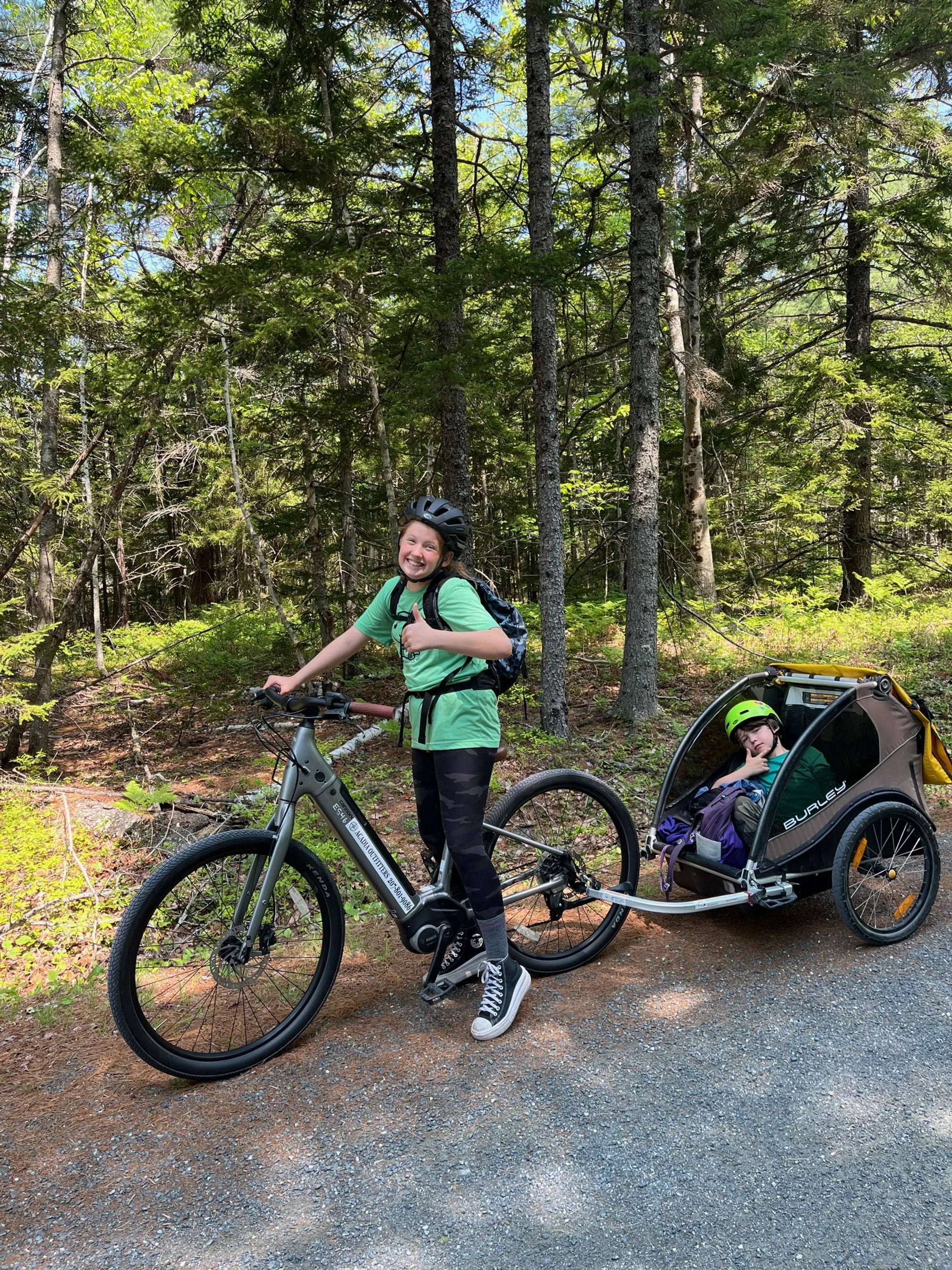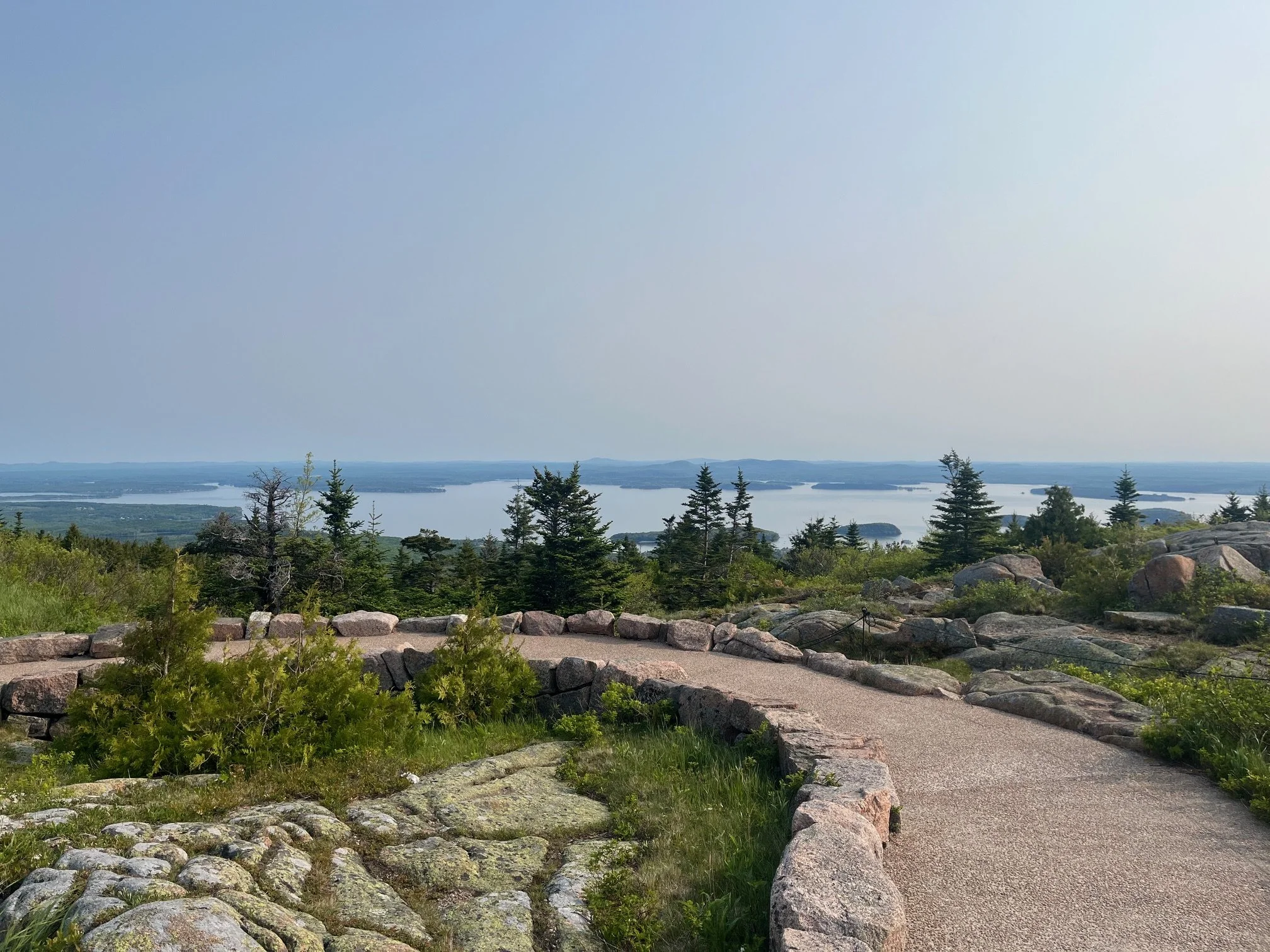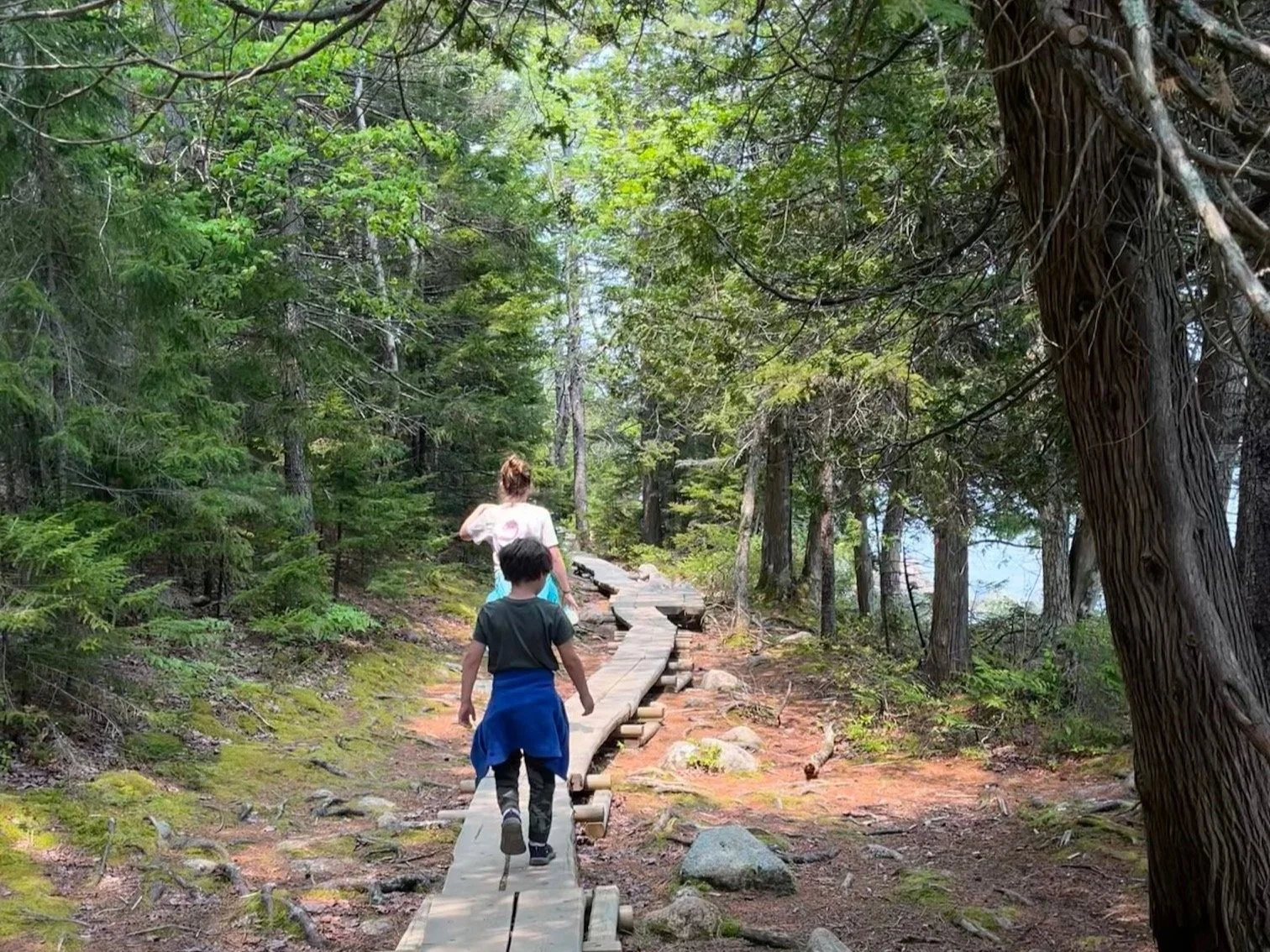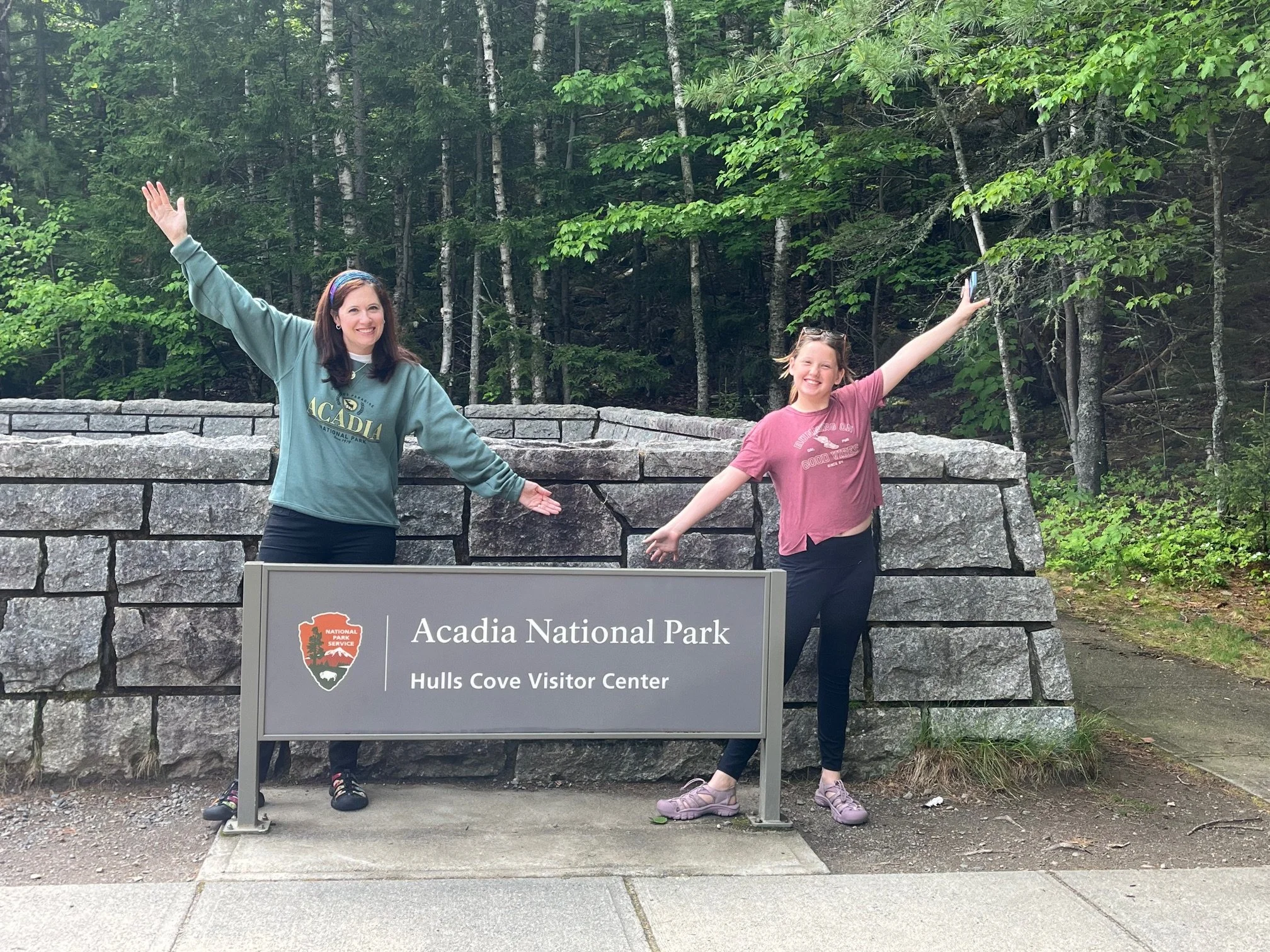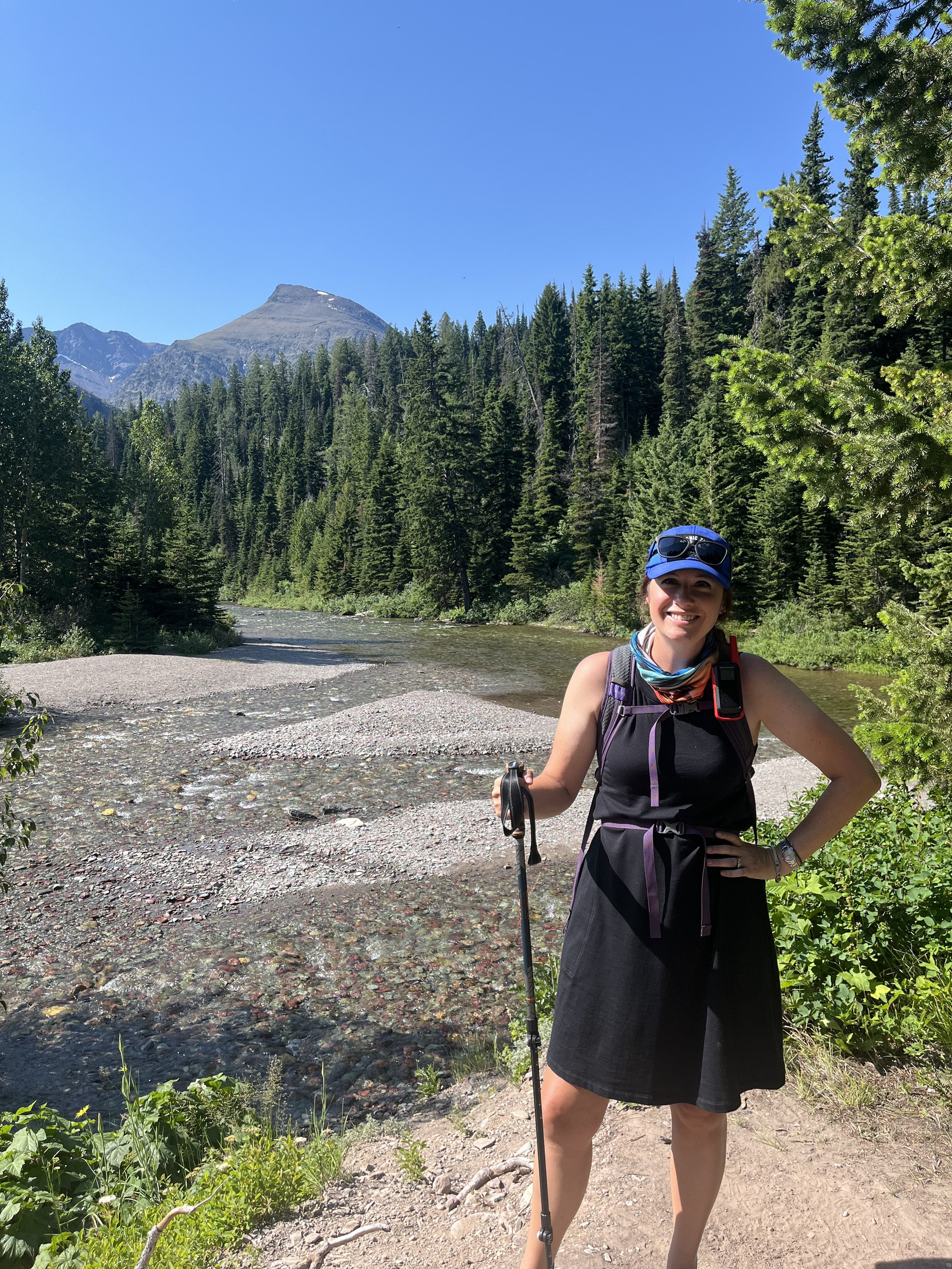Acadia National Park with Kids: A Guide
Head to Acadia National Park with your kids to explore rocky beaches, hidden coves, misty cliffs, and woodland hikes!
One of the United States’ most visited—and most beloved—national parks, Acadia has been a must-visit vacation destination since it was founded in 1916 through the efforts of philanthropist George Bucknam Dorr.
Today, families can explore the park’s main area on Mt. Desert Island as well as more remote parts of the park like the Schoodic Peninsula and Isle au Haut.
Despite the park’s popularity, there are many ways for your family to dive into the beauty, history, and nature of coastal Maine. From biking on the carriage roads to hiking along foggy inlet, there’s enough to keep your family busy for an entire vacation.
Below, you’ll find everything you need to know to set started on your kid-friendly visit to Acadia National Park from suggested activities to tips on how to make your trip safe and memorable.
The Camping Kiddos at the North Bubble Summit in Acadia National Park
This post contains affiliates. If you purchase through the links below, I will receive a commission at no charge to you.
Family Vacations at Acadia National Park: An Overview
Acadia National Park is everything you were expecting in a coastal Maine destination, and also everything you weren’t expecting!
Its location near Bar Harbor, Maine, makes it incredibly easy to explore different parts of the park without too much driving. The park’s 47,000 acres is spread out over a couple of different areas (more on that below), but nothing is ever much further than a 45 minute drive away.
For families with little kids, that means more fun on the trails and beaches and less time with stressed out kids in the backseat.
The cute town of Bar Harbor also means that you’ve got restaurants, campgrounds, hotels, shopping, and non-park tours close by, which is what turns Acadia from a single stop on a Maine road trip into a family vacation destination on its own.
The park is best known for the Bass Harbor Head Light Station, its challenging hikes, and 27-mile loop road, but there’s so much more here than that—including kid-friendly hiking and some of the most delicious popovers you’ll ever have.
Areas of the Park
Mt. Desert Island
When you think of Acadia, this is the part of the park that you’re envisioning. It’s just minutes from Bar Harbor, making it an easy add-on to your vacation.
You’ll find Ocean Trail, the main scenic loop drive, the carriage roads, Sand Beach, Jordan Pond, and famous hikes like the Beehive here.
This is also where you’ll find the park’s main visitors center, the Hulls Cove Visitors Center and the free Island Explorer bus routes.
The eastern side of the island, closer to Bar Harbor, is much busier than the western side, so make time to do both, if possible. The western side has the Bass Harbor Lighthouse, Carroll Homestead, lobster villages, and easy hikes.
It’s also the largest portion of the park, and if you’re only going to visit one area of Acadia, make it this one.
My son explores some of the interactive exhibits at the Schoodic Institute
Schoodic Peninsula
For those who want the grandeur of Mt. Desert Island’s rugged cliffs, splashing waves, and crisp pine forests without the crowds, drive the 45 minutes from Mt. Desert Island to the Schoodic Peninsula.
You’ll find another, smaller (but less crowded) scenic loop drive, the incredible Rockefeller Hall and Schoodic Institute, tidepools, and some kid-friendly hikes.
You’ll need to use your GPS as you head down the back roads between Bar Harbor and the Schoodic Peninsula, but it makes for a relaxing drive.
Plus, you’ll get to see some of the small lobster and fishing villages that are far away from the busier Bar Harbor and Mt. Desert.
Bar Harbor
My daughter waiting for the sand bar to Bar Island to fully reveal itself
Even though the main portion of Acadia is near Bar Harbor, there are actually small pockets of the park scattered in Bar Harbor proper.
For example, you’ll find the short but excellent Compass Harbor Trail that leads to the property ruins of “the father of Acadia,” George Dorr.
Bar Island, which is where Bar Harbor takes its name, is also a part of the national park, and is a fun family adventure. Wait for the sand bar to reveal itself and then walk over to the island!
Isle au Haut
If you really want to get away from the crowds, head over to Isle au Haut, which is southwest of Mt. Desert Island and only accessible by ferry.
Bike on the 11 miles of road (both paved and unpaved), and take a look at the small fishing community that lives here year round.
While it’s a gorgeous place with incredible history and views, this area of the park would be my suggestion to skip if you have limited time in Acadia with your kids.
When is the best time to visit Acadia National Park with kids?
PIN ME!
While the park is open year round, the absolute best time to go is in late May and early June.
Maine schools don’t get out until mid-June, so your family will have the park nearly to yourselves if you can swing a trip in late spring, especially if you go mid-week.
Memorial Day weekend can get busy on popular trails, but go early and you shouldn’t have any issues.
The weather is still a little chilly, but you’ll be fine with an extra sweatshirt in the mornings and evenings. And if you’re my kids, you’ll still want to splash around in the surf!
The second best time would be during leaf peeping season, when Acadia burst into full color. While the exact dates of peak leaf season vary from year to year, plan a fall break trip during the first 2 weeks of October.
Fair warning: the crowds are tough during this time of the year, but the intense foliage (mostly) makes up for it.
On a day-to-day basis, the park doesn’t require reservations—other than to get to Cadillac Mountain—so you don’t need to rush into the park.
This allows for flexibility in your schedule, and you can quickly pop back into Bar Harbor for a snack or meal between hikes or tours.
Acadia, Season by Season
A foggy late spring morning at Acadia National Park
Winter is the absolute low season, but this part of Maine doesn’t get quite the snowfall that other areas do, so it’s manageable for most visitors. If you’re coming from a coastal or typically warm location like me, any amount of snow is a good amount of snow, so use caution when driving and navigating around the park.
You can rent snowshoes to explore the trails that are still passable in the winter, which is a fun way to experience Acadia.
One major thing to consider when visiting in the colder months is that you’ll have to find somewhere to stay outside of the park’s boundaries. Most of the Bar Harbor hotels are closed during the low season, as are the majority of the campgrounds.
Spring comes slowly to coastal Maine, but the weather has typically warmed up enough for pleasant hiking and camping by late April or early May. You’re still going to need a sweatshirt and long pants, especially in the mornings and evenings, but you can leave the snowshoes at home.
Summer is when Maine is at its most popular, and for good reason. The mild weather is a welcome relief from the soaring temperatures you’ll find elsewhere in the U.S. this time of the year.
Plus, the longer days give you ample time for hiking, biking the carriage trails, and wildlife spotting.
Visit Acadia in the fall for an explosion of colors (but also a lot of crowds). Other than July, October is the park’s busiest month as thousands of people come to Bar Harbor and Acadia National Park to see the riot of colors as the leaves change.
It’s truly a magical time to visit, but you’ll need to pack your patience, have alternate plans if your chosen trailhead is full, and be ready to bask into the crisp, colorful fall weather.
Do I need a reservation for visiting Acadia?
Views from the Ocean Path Trail in Acadia National Park
No, Acadia National Park currently does not require vehicle reservations to enter the park.
Simply drive up to the entrance gates, and present your NPS annual pass or pay for admission.
From there, you can roam at will through the parks, staying in each area as long as you’d like.
The only exception to this would be access to Cadillac Mountain, locating in Mt. Desert Island on the park’s scenic loop road.
From mid-May to mid-October, getting to the pinnacle of Cadillac Mountain requires a vehicle reservation no matter the time of day.
These are fairly easy to come by, but you will want to set an alarm to ensure you nab one of the more popular times (sunrise) or days (weekends and holidays in July and October).
If you’re hoping to get there at sunrise, remember that it is very early mid-summer, so you’ll need to be in place around 4:00 or 4:30 AM to catch those first few rays.
How long should my family plan to stay here?
While you could get an overview of Acadia National Park in as little as one day, you really need 3-4 days to fully explore the park.
With 3-4 days, you’ll be able to do a couple of shorter hikes, check out Thunder Hole, complete the scenic loop, eat lunch at Jordan Pond, and rent e-bikes for the carriage roads. You’ll need to focus your time on the Mt. Desert section of the park, but you would have time for a day trip to one of the out lying areas with a 4 day visit.
If you can swing a week long visit, you’ll be able to add on time in all sections of the park, plus ranger programs, a whale watching tour from the Bar Harbor marina, and more in-depth exploration of the Schoodic Peninsula.
Where should I stay while visiting Acadia?
The national park doesn’t have any hotels or cabins inside its borders, so you’ll need to head into Bar Harbor and the surrounding area.
Bar Harbor has something for every budget and need, from the luxurious Bayview Hotel to the glamping tents at Under Canvas Acadia.
If you’re camping, you will find 4 campgrounds inside the park: 2 on Mt. Desert (one at Seawall on western Mt. Desert, and one at Blackwall on eastern Mt. Desert), 1 at Schoodic Woods on the Schoodic Peninsula, and then some rustic camping shelters at Duck Harbor on Isle au Haut.
These do book quickly and are only available during the warmer months, so plan ahead.
If you’d like a camping experience with more amenities, I highly recommend the Bar Harbor KOA, which is within easy driving distance of Hulls Cove visitors center and all of Mt. Desert Island.
What Can You Do in Acadia National Park with Kids?
Visitors Centers
The Hulls Cove Visitors Center walkways
We always like to start our national parks vacations with a trip to the visitors centers, as each one is different with new programs, interpretive materials, and gift shops.
The main visitors center at Acadia is surprisingly small and oddly difficult to get to.
Hulls Cove Visitors Center is just a few minutes from Bar Harbor, and there’s a huge parking lot when you’re there.
However, to get to the visitors center—which isn’t even visible from the parking area—you have to walk up several flights of stairs.
You’ll find an Acadia National Park entrance sign at the top of the stairs, as well as a building with 2 bridge walkways. The one closest to the stairs leads to the gift shop, where you can stamp your NPS passport, while the other takes you to the ranger desk.
The two sections are connected inside, so you can easily walk from one to the other without having to go back outside.
There isn’t a museum here, and, overall, the offerings here don’t seem to match up with what I’ve come to expect from a larger, more popular national park.
In any case, don’t plan to spend too much time here once you’ve gotten a map and NPS passport stamp.
A place you will want to linger in is the Sieur de Monts Nature Center, right off of the eastern Mt. Desert scenic loop drive.
There are rangers on duty here typically between April and October, who are happy to help with questions or the Junior Ranger program.
You can learn about the Wild Gardens of Acadia before you explore them on foot nearby.
Over on the Schoodic Peninsula, the Schoodic Woods Campground Ranger Station offers up another opportunity to chat with rangers about your plans, a different passport stamp, and a 3D map of the park.
At peak check-in times, it can get a little busy as there are usually only 2 rangers on duty, who are also helping campers, but the line moves quickly.
Rockefeller Hall at Acadia’s Schoodic Institute
Further down on the peninsula, the Schoodic Institute Welcome Center at Rockefeller Hall is worth the trouble of getting there.
While it’s primarily a space for educational groups, the welcome center is staffed with helpful rangers, who will walk you through the many interactive exhibits in the museum here.
You can learn about local wildlife, plants, the tidepool ecosystem, and the area’s military history.
My kids loved learning Morse Code, practicing their radar skills, and typing important military memos!
Junior Ranger program
My son taking his Acadia National Park Junior Ranger pledge
The Junior Ranger programs at the national parks are amazing!
For free (or just a few dollars at a handful of the parks), kids and kids-at-heart can complete a colorful booklet about that specific NPS site, take a Junior Ranger pledge, and get a badge for their efforts.
It’s an excellent way to help kids learn more about the national park or NPS site they’re visiting with fun, age appropriate activities.
The Acadia National Park Junior Ranger program is free, and the booklet is done in these beautiful watercolor illustrations.
It’s not one that you can easily finish in just a couple of hours like the ones at the Black Canyon of the Gunnison since people generally stay longer at Acadia.
So, be sure to include some downtime in your day to help your child complete the booklet.
When you’re done, head to one of the visitors centers or ranger stations listed above to take the pledge and get your badge.
If at all possible, I recommend heading over to the Schoodic Institute to turn it in as the rangers here generally aren’t as busy as the ones at Hulls Cove and can give your child more individualized attention.
Mt. Carmel Scenic Park Loop Drive
A section of the scenic park loop on eastern Mt. Desert Island
If you are very limited for time in Acadia, or you want a great way to see the highlights of the park, you should do the scenic drive along Park Loop Road.
To pick this road up, turn left right after you enter the park from Highway 3 north of Bar Harbor. There will be signs for the loop road to help you go in the right direction.
The road, which is called Paradise Hill Road, is 2 lanes until you get to the ranger station, after which it becomes Park Loop Road.
On this scenic drive, you’ll be able to make stops at iconic spots in the park like:
Sieur de Monts Nature Center
Sand Beach
Thunder Hole
Jordan Pond, and
Cadillac Mountain.
The road follows the coast for about half of the time, and then tours through the beautiful pine forests for the second half, giving you a glimpse at both of the major ecosystems within the park.
We love doing this drive with our kids since it’s relatively short if you do the entire drive straight through, but there are SO many places to stop off for a quick hike or tidepooling when you’re ready to explore.
Must Have Acadia National Park Audio Tour!
We swear by the GuideAlong audio tours when we’re driving around the national parks, and I highly recommend that you add the Acadia National Park audio tour to your phone to maximize your time in this park.
Once the tour is downloaded, it doesn’t require Wifi, making it excellent for those remote areas. The sections of the tour start and stop automatically as you approach points of interest, and you can skip or go back to specific sections.
We love these as our kids (and us!) learn so much about the history, important figures, geology, and wildlife as we drive around. For less than the cost of admission to the park, you can get hours of audio to accompany your experience.
Carriage Roads
My kids on the carriage roads
The history of Acadia National Park is tied up with the “rusticators,” a group of wealthy people who summered here during the late 1800s.
Investors, bankers, philanthropists, and oil and railroad tycoons like the Vanderbilts, Astors, and Carnegies would come to Mt. Desert Island to enjoy the cool breezes, socialize in their “cottages” (which were actually mansions by any other definition), and take thrilling carriage rides through the pine forests.
Today, much of the interior of the eastern side of Mt. Desert Island is closed to cars, and visitors can enjoy the miles of gravel and packed dirt trails.
This is one of those activities that is absolutely worth getting out of the car for as you’re able to see lakes, waterfalls, and rivers that you wouldn’t otherwise.
You’re welcome to bring your own bikes or e-bikes, but only Class 1 e-bikes are allowed.
If you’re flying in or unable to bring a bike, there are a couple of rental places in Bar Harbor.
We used Acadia Outfitters on Cottage Street, which made the rental process very easy. They had pull behind bike trailers for my 8-year-old, who wasn’t up for riding his own e-bike yet.
If your 7-12 year old does want to ride their own e-bike, you’ll need to go to Maine State Bike and Kayak (also on Cottage Street). They are the only people in town renting out youth e-bikes. They also have the Rad Wagons that we used while biking in Zion National Park.
Once you’re on the carriage roads, you can explore for miles. For the most part, the trails are flat, but that pedal assist will come in handy on the hills you’ll run into from time to time.
Scenic Overlooks
You’ll find many overlooks along Park Loop Road in Mt. Desert and on Schoodic Loop Road on the Schoodic Peninsula.
If you see one that looks interesting, be sure to hop out for a photo since both of those loop roads are one way, and it will be a while before you can make it back to that spot.
If you can only stop to do 3 scenic overlooks with your kids, I’d recommend these:
Thunder Hole
This hilariously named natural feature is a spectacle—when you time your visit correctly.
Here, the rushing ocean water collides with a small cavern, and, when the impact and water levels are just right, you’ll get a big splash and accompanying noise.
It’s best if you’re visiting right before high tide on a day with rough seas as that’s more likely to create the right interaction of water, rock, and force for a spectacular sound and spray.
Otherwise, it’s interesting to walk down to the tip of the overlook area to marvel at the way the little cavern has been carved out here and to watch the waves wash over the rocks.
Find it along the Park Loop Road in eastern Mt. Desert Island between Sand Beach and Fabbri.
Bass Harbor Head Lighthouse
Over on the western side of Mt. Desert Island is the park’s most iconic spot: the black and white Bass Harbor Head Lighthouse perched on sandy cliffs and framed by dark green pine trees.
There are a couple of ways to explore this scenic area, ranging in intensity from barely-getting-out-of-your car all the way to what-was-I-thinking.
For the family who’s looking for the easiest views of the lighthouse, take the short, paved path at the mouth of the parking lot down to the overlook right next to the lighthouse.
You can’t go into the lighthouse as it is still used as a residence by a Coast Guard family, but you can walk out to the front and side of the house.
For those looking for that iconic photo, you’re going to need to like stairs and rock scrambles.
From the parking lot, head to the path nearest the vault toilets, and then climb down the wooden stairs. The clearly defined trail ends there, and the rest is up to you.
You’ll need to slowly pick your way across boulders as you head for the small rocky point near the base of the lighthouse’s cliff.
This is not easy going, and younger kids may struggle to balance on the rocks. It’s really easy to twist an ankle or accidentally shove a foot between the rocks out there.
Even if you can’t make it out to the point, it’s still beautiful to walk along the coast.
Blueberry Hill
This less strenuous, but still beautiful overlook is in Schoodic Peninsula on the loop road there.
During low tide, there’s great tidepooling, and kids might find anemones, starfish, crabs, and periwinkles.
The crashing waves and rocky shore here makes for some perfect Maine photos, and it’s usually less crowded than Mt. Desert Island.
Cadillac Mountain
The path on the Cadillac Mountain Summit Loop Trail
This iconic spot is the only place in Acadia that requires vehicle reservations, but it also provides some of the best views in the park—without much hiking.
The road to the top is beautiful in its own right, but there aren’t many places to pull over until you get to the parking area.
From there, you can walk out to the scenic overlook areas or do the short but incredible Cadillac Mountain Summit Loop Trail.
Hiking with Kids in Acadia
TIP: Before you set out on any hike, it’s a good idea to check for any recent updates, trail conditions, and level of difficulty at AllTrails! Purchase your annual subscription here.
Acadia National Park is known for its hiking, but the most popular trails aren’t ones that the average vacationer is going to be able to do without a lot of gear or training.
The Beehive Trail, for example, has ladders and rock scrambles, and many areas with steep drop-offs. My kids can get intimidated by trails with these kinds of heights, so you’ll want to make sure your child is really ready for something that intense.
If you’re just looking for an enjoyable trail that doesn’t require a lot of pre-planning, there are several that are great for kids!
The Sundew Trail on Schoodic Peninsula has a trailhead right next to Rockefeller Hall, making this a great add-on to that kid-friendly stop.
This 0.7 out and back trail is rarely busy, and takes you to 3 scenic overviews of the ocean.
It’s named for a beautiful carnivorous flower, so be on the lookout for those as you hike. These flower in mid-summer and can occasionally be found near the trail.
The Camping Kiddos on the Jordan Pond Trail
Another favorite in our family is the Jordan Pond Trail, which loops around Jordan Pond (unsurprisingly). If you’re looking to burn off a big lunch of popovers at the nearby cafe, this is a great way to do so.
For more information on what to expect while eating at Jordan Pond, check out my complete guide!
The Jordan Pond Trail on eastern Mt. Desert Island is about 3 miles around, and there are fun boardwalks along the way.
You’ll have excellent views of the pond the entire way and will walk at the base of the mountains where North and South Bubble are.
Compass Harbor Trail isn’t advertised, so you usually won’t pass more than a few other hikers. However, it is excellent and well worth the trouble of finding the unmarked parking area on Main Street to the south of Bar Harbor.
Here, you can take a self-led audio tour of Oldfarm, the original property of the father of Acadia, George Bucknam Dorr.
Walk along the stones that once made up his swimming area—now great for tidepooling—and explore footprint of the large home that he gave to the federal government in the hopes they could use it for park services.
Me at the North Bubble Summit
Sadly, the government tore it down rather that pay for its upkeep, but the property is still well worth a visit.
The 1 mile loop is easy and has plenty of places for tidepooling and exploring.
One of the most unique hikes in Acadia is crossing the Bar Harbor sand bar trail!
At low tide, head down to Bridge Street and walk across the exposed spit of land.
Bar Island and the sandbar trail are in the national park, so you can explore on the island as well. Just watch the time before you have to come back.
If you want a challenge but aren’t quite ready to tackle Acadia’s most intense hikes, the North Bubble summit trail is a good option.
There is some elevation gain, but it wasn’t anything that my 8- and 11-year olds weren’t able to handle. (When we did this hike, I had a terrible cold, and, even in that condition, I managed to huff and puff my way up!)
North Bubble summit has some rock scrambles and is generally all uphill, but go slowly and take breaks.
The views from the top are incredible: you’ll be able to see Jordan Pond and the Atlantic beyond.
Ranger Walks and Programs
Going on a ranger walk or ranger-led program is an excellent way to learn more about Acadia. These activities are free or low cost, and typically don’t require reservations.
Campfire Talks
During the warmer months, rangers lead nighttime talks at the park’s campgrounds that are great for kids.
These don’t require any reservations, though you will need to check at one of the ranger stations, visitors center, or campground front desk to see which nights the program will be held nearest you.
Boat Tours
Baker Island, one of the outer islands in the park, is only accessible to the public via a ranger-led tour.
You can also hop on one of the ranger-led boat tours to other areas of the park, including Islesford and Little Cranberry Island. These tours are highly dependent on the season and day of the week, so you’ll want to do your research before you arrive.
I highly recommend doing a boat tour while you’re in Acadia National Park and the surrounding area, and this tour is less expensive than the ones you’ll book at the Bar Harbor Marina. Though, each covers different parts of the area, so you could do both for a fun comparison!
They do cost money (usually between $20-30 per person), and you’ll want to book ahead.
Touch Tank Program
These interactive programs take place at Rockefeller Hall at the Schoodic Institute, and are completely free.
Kids can learn about the creatures they’ll likely come across while tidepooling in Acadia, and how to interact with them safely.
The ranger leading the talk brings live sea creatures so that everyone can see and touch the creatures as they learn something new.
Tips for Visiting Acadia National Park with Kids
My daughter and I at the little park sign at Hulls Cove
Have a plan before you arrive.
Especially if you’re visiting during the peak summer season, you’ll want to make sure that you’ve pre-booked boat tours, bike rentals, and your Cadillac Mountain reservations.
There’s nothing worse than hyping up a specific activity to your family and then finding out that the last ticket sold out yesterday.
You can get away with flying by the seat of your pants in the off and shoulder season, but the tours in the summer do sell out. The bike rental places will run out of bikes mid-morning.
Visit parts of the park OTHER than eastern Mt. Desert Island.
While eastern Mt. Desert is a must do, there are so many other incredible places in Acadia that get overlooked.
So, get off of the beaten path and away from the crowds.
Go over to western Mt. Desert (the so-called quiet side of Acadia) to see working lobster villages. Ask the lobstermen if they’ve found any blue lobsters lately!
Explore the Schoodic Peninsula, or pack a picnic to take a day trip to Great Cranberry Island.
Bar Harbor is very convenient to everything you’ll need for a family vacation.
When we’re exploring the national parks, I’ve found that I usually have to show up prepared with groceries, medicines, extra water, and extra clothes since the closest grocery store is miles away.
Acadia is right next to Bar Harbor, which has just about anything you’d need.
There’s a Hannaford’s, a large grocery store with a deli, bakery, and a big selection of grocery items.
There are pharmacies if you get sick, plenty of gas stations, and lots of restaurants. And speaking of gas stations, if you happen to be filling up at the Shell station on Bar Harbor Road, be sure to go into the Hulls Cove General Store and Deli for fantastic breakfast sandwiches and muffins.
Be aware of your natural surroundings.
While this statement seems painfully obvious, Acadia really is a place to watch yourself and your kids as you explore.
The rocks that look like so much fun to climb on can be slippery from the wave that just splashed on it, and you can easily fall.
There aren’t guardrails on the cliffs here, so if you’ve got a kid who loves running and jumping, you’ll want to rein them in a bit.
As long as you’re making careful but directed decisions, watching your footing, and not running around the cliff edges, you should have a safe and wonderful trip!


